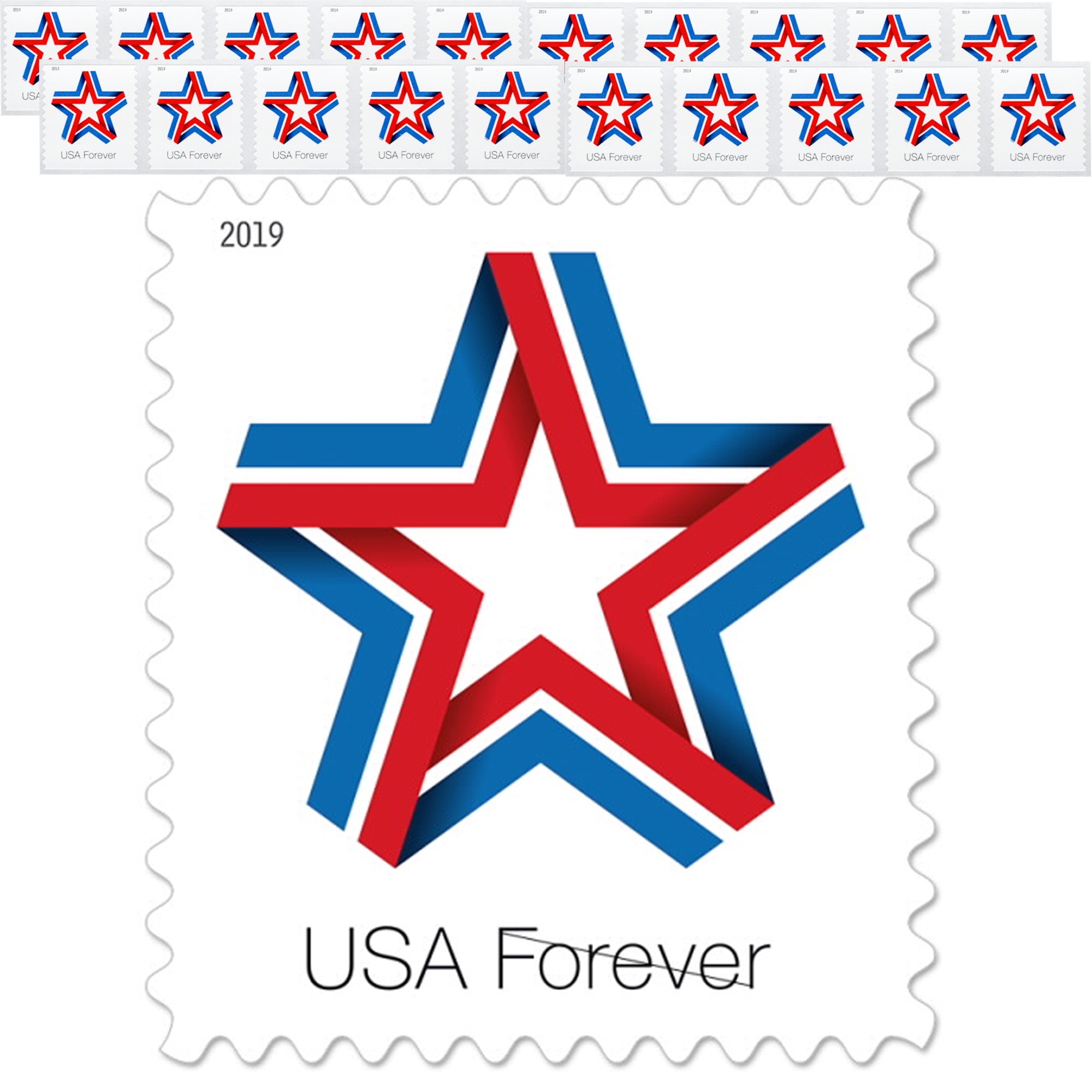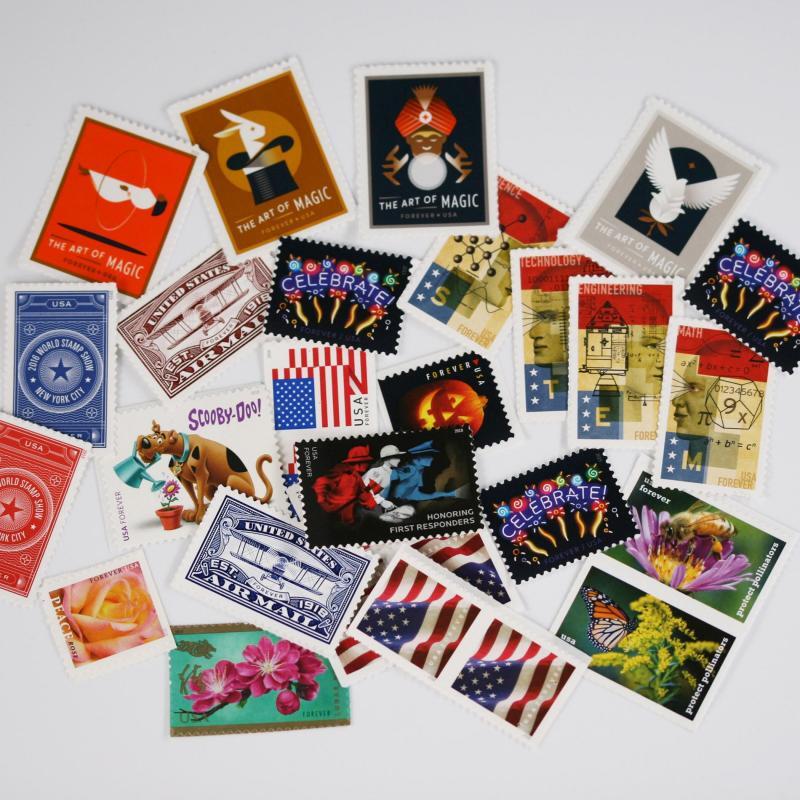Are older forever stamps still good? This timeless question unveils a fascinating journey into the intersection of postal history and economic realities. The introduction of the Forever stamp, a revolutionary concept designed to transcend the fluctuating tides of inflation, sparked both intrigue and skepticism. This exploration delves into the historical context of its creation, examining the initial pricing, public reception, and the ingenious design philosophy behind its enduring appeal.
We will uncover how inflation impacts postage rates and dissect the official USPS stance on the continued validity of these seemingly ageless postage icons.
By examining historical postage rate increases alongside inflation trends, we’ll illuminate the inherent value proposition of Forever stamps. We’ll also address practical usage scenarios, highlighting instances where these stamps prove invaluable and situations where alternative methods might be more suitable. This journey will illuminate the wisdom behind the Forever stamp and empower you to make informed decisions about your postal needs.
Forever Stamp History and Introduction

The United States Postal Service (USPS) introduced the Forever stamp in 2007, a revolutionary concept in postage. Initially priced at 41 cents, reflecting the then-current First-Class Mail rate, these stamps were designed to be perpetually valid, regardless of future rate increases. This innovative approach aimed to simplify the mailing process for consumers and reduce the logistical burden on the USPS.The primary goal behind the Forever stamp was to provide consumers with a convenient and cost-effective solution for mailing letters and postcards.
The design philosophy centered around ease of use and future-proofing postage costs. Unlike traditional stamps with fixed denominations, Forever stamps adapted to the changing cost of mailing, eliminating the need for consumers to constantly purchase new stamps whenever postage rates adjusted. This offered a significant advantage over traditional stamps, particularly for individuals who frequently mailed letters or those uncertain about future postage increases.
Forever Stamp Initial Public Reception and Adoption
The introduction of Forever stamps was met with a mixed initial reaction. While some consumers embraced the convenience and simplicity they offered, others expressed skepticism about the long-term viability and value proposition. Concerns arose regarding the potential for the USPS to significantly raise rates in the future, diminishing the perceived value of the Forever stamps. However, the convenience and cost-effectiveness eventually outweighed these concerns.
The adoption rate of Forever stamps steadily increased over time, driven by both consumer demand and the USPS’s marketing efforts. The stamps’ adaptability to changing postal rates proved to be a significant selling point, and they quickly became a staple in the mailing process for many individuals and businesses. The USPS successfully demonstrated the practicality and financial benefits of this innovative approach to postage.
The Impact of Inflation on Postage Rates: Are Older Forever Stamps Still Good
Inflation significantly impacts postage rates and the purchasing power of stamps. As the general price level of goods and services in an economy rises, the cost of producing and delivering mail also increases. This necessitates adjustments to postage rates to maintain the financial viability of postal services. The relationship between inflation and postage rates is not always perfectly correlated, but a long-term upward trend in both is generally observed.Inflation erodes the value of stamps over time.
A stamp purchased today might not buy the same amount of postage in the future due to inflation. This means that while a “Forever Stamp” maintains its face value for first-class mail, its real value (purchasing power) decreases as inflation increases the overall cost of mail handling. This is a key factor to consider when analyzing the long-term value and practicality of stamp collections or bulk stamp purchases.
Historical Postage Rate Increases Compared to Inflation
Analyzing historical data reveals a complex relationship between postage rate increases and the inflation rate. While postage rates generally rise to account for inflation, the magnitude of these increases often varies. Sometimes, postage rate increases outpace inflation, leading to a higher real cost of mailing. Other times, increases may lag behind inflation, potentially leading to a temporary decrease in the real cost.
These discrepancies can be attributed to various factors, including government policies, operational efficiencies within the postal service, and changes in mail volume. Examining specific periods can illustrate these variations. For example, periods of economic recession might see slower postage rate increases compared to periods of rapid economic growth.
Postage Rate Changes Over Time
The following table illustrates the changes in US postage rates for a 1-ounce first-class letter over several decades, alongside the corresponding annual inflation rates (as measured by the Consumer Price Index – CPI). Note that this data is simplified for illustrative purposes and does not include all rate adjustments. A more comprehensive analysis would require a much larger dataset.
| Year | Rate (USD) | Inflation Rate (%) | Change from Previous Year (USD) |
|---|---|---|---|
| 1971 | 0.08 | 4.3 | – |
| 1981 | 0.18 | 10.3 | 0.10 |
| 1991 | 0.29 | 4.2 | 0.11 |
| 2001 | 0.34 | 2.8 | 0.05 |
| 2011 | 0.44 | 3.2 | 0.10 |
| 2021 | 0.55 | 4.2 | 0.11 |
Forever Stamp Value and Current Postage Rates
Forever stamps maintain their value despite fluctuations in postage rates. Their inherent flexibility stems from their ability to always cover the cost of a first-class one-ounce letter. This makes them a convenient and cost-effective option for consumers, though it’s crucial to understand the limitations of their applicability.The current first-class mail postage rate for a standard one-ounce letter is $0.66 as of January 2024.
A Forever stamp, therefore, currently covers the cost of sending a standard letter weighing one ounce or less. This means a single Forever stamp will suffice for most typical letters. However, it is important to remember that this rate is subject to change.
Situations Where a Forever Stamp May Be Insufficient
Understanding the limitations of Forever stamps is essential for ensuring your mail is properly postage. Using insufficient postage can lead to delays or non-delivery of your mail. The following scenarios illustrate instances where a single Forever stamp may not be enough:
- Oversized or Overweight Mail: Forever stamps are only valid for standard-sized letters weighing one ounce or less. Larger envelopes or heavier letters require additional postage. The cost will increase based on both weight and size. For example, a letter exceeding one ounce or with dimensions exceeding the standard letter size will require additional postage beyond the value of a single Forever stamp.
- International Mail: International postage rates vary significantly depending on the destination country and the weight of the item. Forever stamps are exclusively for domestic first-class mail within the United States and its territories. Attempting to use them for international mail will result in your mail being returned or delayed.
- Certified Mail, Registered Mail, or Insured Mail: These services require additional fees beyond the standard postage rate. A Forever stamp only covers the basic first-class postage; additional postage is necessary to cover the added costs of these services.
- Priority Mail or Express Mail: These faster mail services have higher postage rates than first-class mail. Forever stamps are specifically for first-class mail and cannot be used for these faster options. Using a Forever stamp for Priority or Express mail will lead to insufficient postage.
- Postcards: While postcards are typically lighter than a standard letter, the rate may differ. Check the current postage rate for postcards to ensure you use sufficient postage. Although a Forever stamp might sometimes suffice, this depends on the current rates and should be confirmed before mailing.
Official USPS Statements on Forever Stamp Validity
The United States Postal Service (USPS) maintains a clear and consistent policy regarding the validity of Forever stamps. Their position emphasizes the enduring value of these stamps, regardless of fluctuations in postage rates. This policy is rooted in the understanding that Forever stamps offer consumers a convenient and cost-effective way to mail letters and packages, protecting them from unpredictable increases in postal charges.
The USPS regularly communicates this policy through various channels, ensuring public awareness and maintaining consumer confidence.The USPS has not issued specific press releases dedicated solely to Forever stamp validity. However, their official website and numerous customer service communications consistently reaffirm the ongoing validity of Forever stamps. The core message remains: a Forever stamp will always cover the cost of a one-ounce First-Class Mail letter, regardless of when it is used.
This commitment is integral to the USPS’s long-term strategy for providing affordable and reliable mail services. Information is readily available on their website, in FAQs, and through direct customer service interactions.
USPS Policy on Forever Stamp Usage
The USPS’s official stance on Forever stamps can be summarized as follows: Forever stamps are always valid for the current First-Class Mail one-ounce letter rate. This means that even if postage rates increase, a Forever stamp purchased years ago will still be sufficient to mail a standard letter. The USPS website and various help resources clearly state this policy, providing consumers with a reliable and transparent understanding of the stamp’s value.
This consistent messaging aims to reduce customer confusion and ensure continued public trust in the postal service. The policy effectively protects consumers from unexpected increases in mailing costs and provides a stable and predictable option for everyday mail needs.
Practical Applications and Usage Scenarios

Forever stamps, despite their seemingly simple nature, offer a range of practical applications for everyday mail and beyond. Understanding their usage nuances can significantly impact mailing costs and efficiency. This section details various scenarios where Forever stamps prove advantageous or disadvantageous, clarifying common misconceptions surrounding their use.Forever stamps are designed for letters, postcards, and large envelopes weighing one ounce or less.
Their primary benefit lies in their unchanging value, irrespective of postage rate increases. This makes them a convenient and cost-effective option for individuals and businesses sending a consistent volume of mail. However, their applicability varies depending on the specific mailing requirements.
Using Forever Stamps for Different Mail Classes, Are older forever stamps still good
Forever stamps can be used for First-Class Mail, including letters, postcards, and large envelopes up to one ounce. They are not suitable for heavier packages or mail requiring additional services like certified mail or registered mail. Additional postage will be required for heavier items or those requiring tracking. For example, a package weighing two ounces will require a Forever stamp plus additional postage to cover the extra weight.
Similarly, a letter requiring certified mail will need the Forever stamp plus the certified mail fee.
Common Misconceptions about Forever Stamp Usage
A common misconception is that Forever stamps are only valid for a limited time. This is incorrect; their value remains constant, adjusting automatically to the current First-Class Mail rate. Another misconception is that Forever stamps cannot be used internationally. While Forever stamps cover the domestic First-Class Mail rate, they cannot be used for international mail; separate international postage is required.
Finally, some believe Forever stamps can only be used on one piece of mail. This is false; multiple Forever stamps can be used to cover the postage for a heavier item, as long as the total postage equals or exceeds the required amount.
Situations Where Forever Stamps Are Advantageous
Using Forever stamps is advantageous for individuals and businesses sending a consistent volume of standard mail. Their unchanging value protects against unexpected postage increases, providing cost predictability. For example, a small business sending monthly invoices will benefit from using Forever stamps, as they avoid the risk of underpaying postage due to future rate hikes. Similarly, individuals sending regular personal letters will find them a convenient and cost-effective solution.
Situations Where Forever Stamps Are Disadvantageous
Forever stamps are less advantageous when sending heavier packages, international mail, or mail requiring special services. In these cases, the additional postage needed will negate any cost savings achieved by using Forever stamps. For example, sending a heavy package internationally will require significant additional postage, making Forever stamps a less economical option compared to purchasing postage that specifically covers the weight and destination.
Additionally, using Forever stamps for mail requiring tracking or insurance will necessitate paying extra for those services, potentially offsetting the initial cost savings.
Alternatives to Forever Stamps
Forever stamps offer a convenient and readily available option for mailing letters and postcards, but they are not the only method available. Several alternatives exist, each with its own set of advantages and disadvantages depending on individual needs and mailing volume. Understanding these alternatives allows for informed choices that optimize cost and efficiency.Choosing the most suitable postage method depends on factors like the frequency of mailings, the volume of mail, and the desired level of convenience.
While Forever stamps are simple and readily accessible, other methods may prove more economical or efficient for specific circumstances.
Comparison of Postage Methods
The following table compares Forever stamps with metered mail and prepaid postage labels, highlighting their respective strengths and weaknesses across key factors. The cost figures are estimates and may vary based on location, weight, and service type.
| Method | Cost | Convenience | Limitations |
|---|---|---|---|
| Forever Stamps | Variable, but generally matches the current first-class mail rate at the time of purchase. | Readily available at post offices and many retail locations. Simple to use. | Can become outdated if postage rates increase. Not ideal for high-volume mailings. |
| Metered Mail | Generally slightly cheaper than Forever stamps, especially for high-volume mailings. | Requires a postage meter machine, which involves an initial investment and ongoing maintenance. More efficient for businesses sending large amounts of mail. | Higher upfront cost for equipment. Requires specialized equipment and technical knowledge. |
| Prepaid Postage Labels | Cost varies depending on the provider and service selected; often comparable to Forever stamps or slightly more expensive for convenience. | Convenient for online purchases and bulk mailings. Can be printed at home or ordered online. | Requires access to a printer and internet. May involve additional fees from the provider. Some providers might offer limited service options compared to the USPS. |
Situations Favoring Alternative Postage Methods
Metered mail is typically more cost-effective for businesses sending a large volume of mail regularly. The initial investment in a postage meter is offset by the savings on postage over time. Prepaid postage labels are particularly useful for online retailers and businesses that process many shipments. The convenience of automated label generation and printing significantly streamlines their operations.
For individuals sending infrequent mail, Forever stamps remain a convenient and readily available option.
Illustrative Examples of Forever Stamp Usage

Forever stamps offer a convenient and often cost-effective way to mail letters and postcards. However, understanding their limitations is crucial to avoid insufficient postage. The following examples illustrate appropriate and inappropriate uses, highlighting scenarios where Forever stamps provide savings.
Appropriate Forever Stamp Usage: Standard Letter
A one-ounce letter addressed to a recipient in the same state was mailed using a Forever stamp. The letter contained a personal message and a photograph, weighing approximately 0.8 ounces. The Forever stamp covered the postage completely, and delivery was successful within the standard timeframe. This scenario demonstrates the typical, intended use of a Forever stamp for standard-weight, domestic first-class mail.
Insufficient Postage: Oversized Package
A small package, measuring 6x9x12 inches and weighing 1.5 pounds, was sent to a recipient in another state. A single Forever stamp was affixed. This was insufficient. The package exceeded the weight and size limits for standard first-class mail, requiring additional postage, based on dimensional weight calculations and the destination. The sender had to pay additional postage fees at the post office to ensure delivery.
Cost Savings with Bulk Mailing Using Forever Stamps
A small business sent 500 thank-you postcards weighing one ounce each to clients across the country. Using Forever stamps, the total cost was $500 (assuming a $1.00 cost per Forever stamp at the time of mailing). If the business had used stamps based on the then-current postage rate for postcards, and the rate had increased between the time the stamps were purchased and the mailing occurred, they would have potentially spent significantly more.
This illustrates how Forever stamps can offer a degree of protection against postage rate increases when sending a large quantity of mail.
The enduring power of the Forever stamp lies not merely in its ability to adapt to inflation, but in its symbolic representation of enduring value and steadfast communication. While alternative methods exist, the simplicity and reliability of the Forever stamp remain a testament to elegant design and enduring practicality. This exploration has hopefully shed light on the multifaceted nature of this postal marvel, empowering you to navigate the world of postage with confidence and clarity, embracing the timeless wisdom embedded within each stamp.
User Queries
Can I use a Forever stamp on a package?
No, Forever stamps are only valid for standard-sized letters (typically under 1 ounce). Packages require additional postage based on weight and size.
What happens if I use a Forever stamp and it’s not enough postage?
The recipient will likely receive a notice to pay the outstanding postage or the mail may be returned to the sender.
Are Forever stamps valid internationally?
No, Forever stamps are only valid for domestic mail within the United States.
Where can I buy Forever stamps?
Forever stamps can be purchased at most post offices, online through the USPS website, and at many retailers.
Do Forever stamps expire?
No, Forever stamps retain their value regardless of how long they’ve been held, as long as they are in good condition and haven’t been cancelled.






